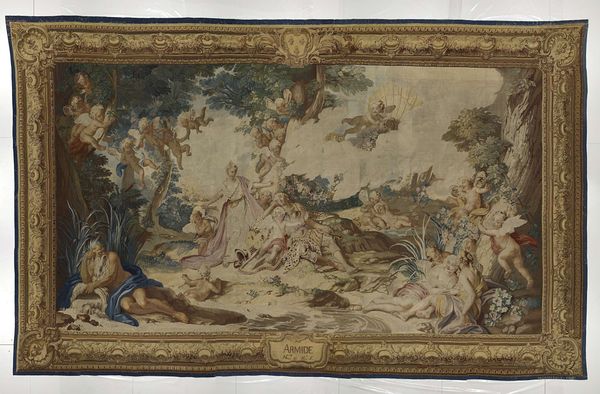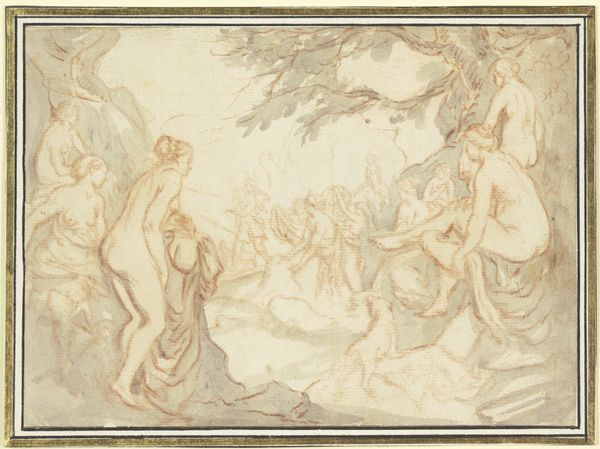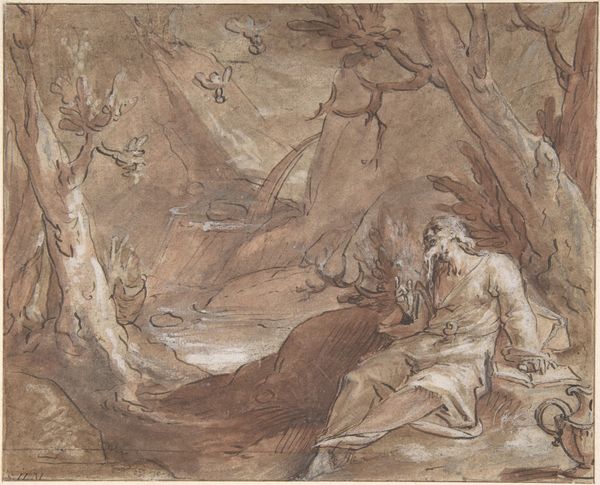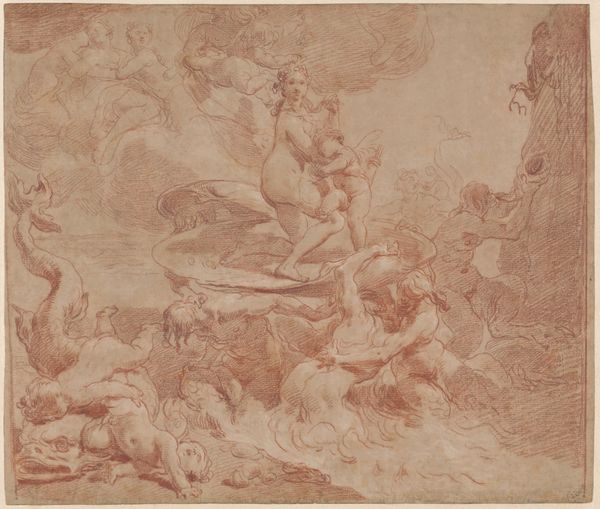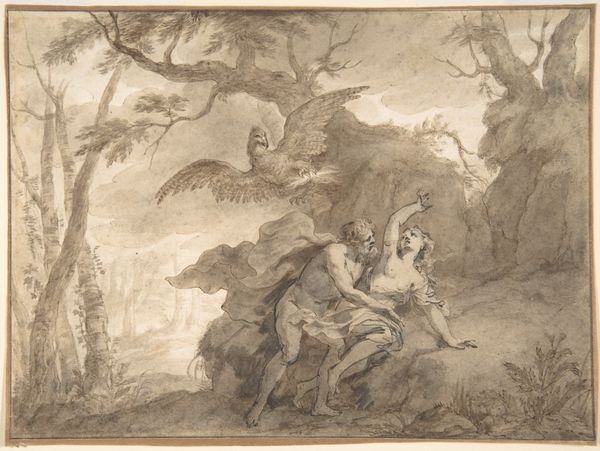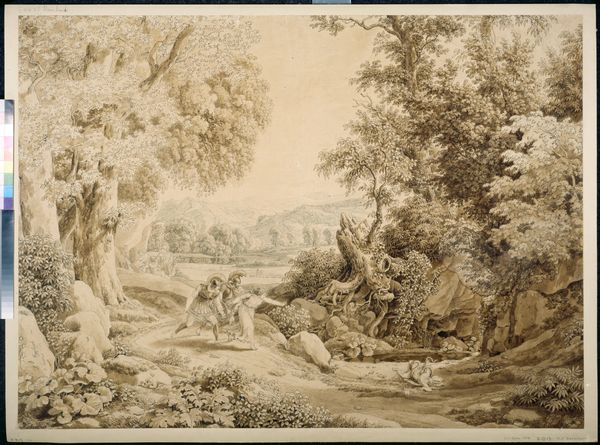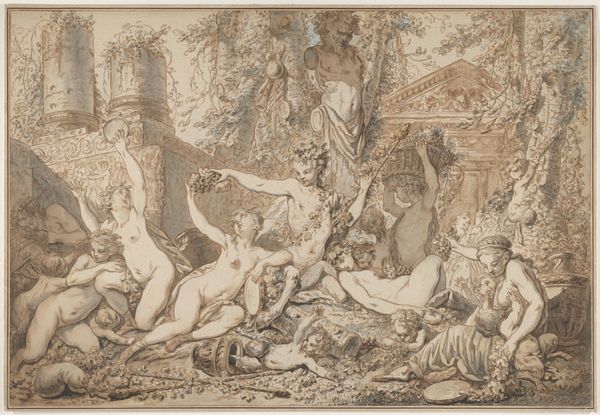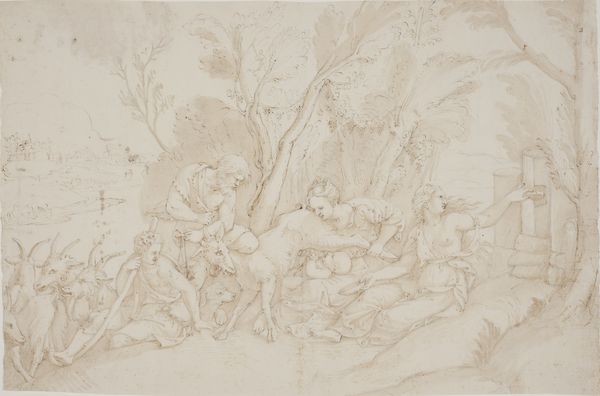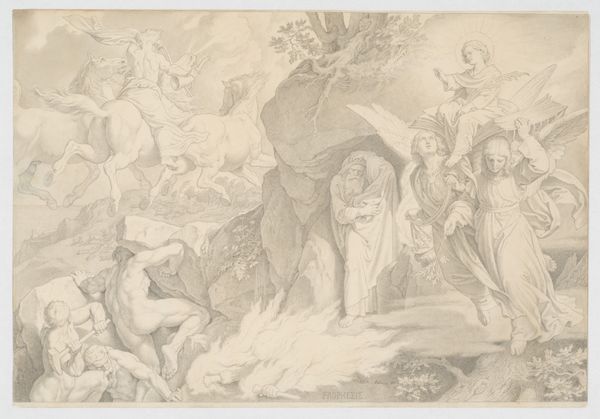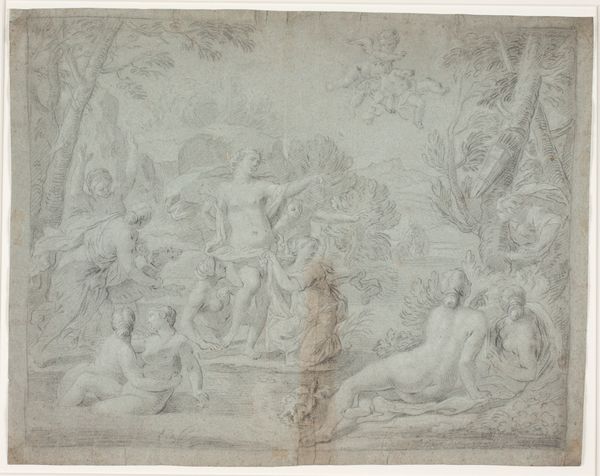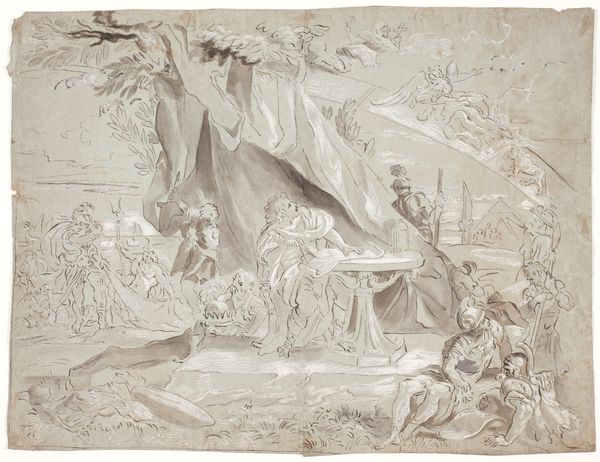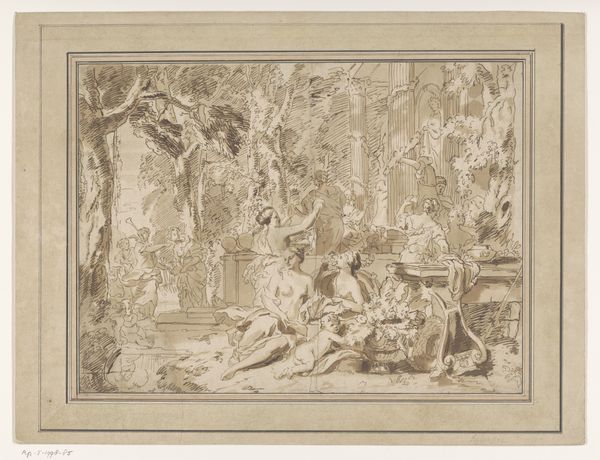
drawing, paper, ink, pencil, chalk
#
drawing
#
netherlandish
#
baroque
#
animal
#
landscape
#
figuration
#
paper
#
11_renaissance
#
ink
#
pencil
#
chalk
Copyright: Public Domain
Curator: Here we have Abraham Bloemaert’s drawing, "The Golden Age," created around 1603. It’s rendered in pencil, chalk, and ink on paper. Editor: It strikes me immediately as a densely populated, dreamlike Arcadia, with figures seemingly emerging from the very landscape. The monochrome palette lends a soft, almost ethereal quality to the scene. Curator: Absolutely. Note the careful organization, from the dark foreground leading our eye into the lighter, more open space where classical figures recline and engage. The figures conform to a mannerist style, but the landscape integrates a more baroque sensibility, using varied textures through Bloemaert's material applications. Editor: Yes, and those applications point to Bloemaert's awareness of process. Chalk allows broad, tonal shifts, whereas the precision of ink dictates outline and fine detail. We should consider the paper too, as the age shows staining that interacts with his line work. The materiality reinforces the pastiche within the landscape itself. Are we observing nature or an aesthetic ideal formed from the raw materials of the Earth? Curator: Intriguing question. Considering the formal balance, with groupings of figures echoing the placement of trees, could further reveal the drawing’s intrinsic meaning. Is Bloemaert interested in the inherent perfection of ideal landscape, reflected by the calm temperament of its inhabitants? Editor: Possibly, though I’d also want to know what kind of pencils, inks, and chalks he would've used, given the context of his workshop. Labor certainly determined quality here. A pigment derived from local sources creates a far different experience than one created from overseas. The bodies aren’t just figures. They are bodies in the landscape made by bodies in the studio, which ultimately alters how we experience it as an aesthetic, but material event. Curator: I appreciate that perspective. The drawing does reveal complexities in both form and content that are worth further meditation. Editor: I concur. Examining the materiality and production provides yet another layer for understanding this idyllic world.
Comments
stadelmuseum about 2 years ago
⋮
During the early Baroque period the painter Abraham Bloemaert ranked among the leading artists in Amsterdam and then in Utrecht in particular. His most important graphic work is the vivid, large-format pen-and-ink and brush drawing 'The Golden Age'. Although we cannot be certain whether it counts as an artwork in its own right or whether it was created to be translated into a copperplate engraving, the composition nonetheless achieved considerable fame through its dissemination as a print and a number of painted copies. This may perhaps have played a role when Johann Friedrich Städel acquired the sheet from the French art trade in the late eighteenth century. According to the history of the world by the Greek poet Hesiod, which was taken up by other classical authors, mankind originally lived in a state of peace and happiness, in which they were nourished by the wealth of fruits of generous Nature and otherwise had no further needs. This "Golden Age" was then followed by other ages, each less glorious than the previous one, until we arrive at the present age, which is described as dark and immoral. From the Renaissance onwards, the vision of the paradisiacal "Golden Age" appealed to artists and observers as a projection of longing or as the prophecy of its return, for example at the beginning of the reign of a new ruler.The wish for peace and happiness in the Netherlands, which was then embroiled in the Eighty Years' War with Spain in its struggle for independence, may explain the success of Bloemaert's composition. It shows lightly clad people of all ages distributed in casual groups across an unspoilt landscape, which is not cultivated and yet does not seem threatening in any way. A boy in the foreground is blowing soap bubbles in the air, a didactic reminder of the transitory nature of the state of happiness. These people, some of whom are busily gathering fruits, are surrounded by different animals, while Saturn - under whose sign the Golden Age is taking place - gazes down from a cloud. The posing figures show Bloemaert's origins in the age of Mannerism, and the emphasis he lays on the naturalistic portrayal of the animals and plants points forward to the realism of the Baroque period.
Join the conversation
Join millions of artists and users on Artera today and experience the ultimate creative platform.
